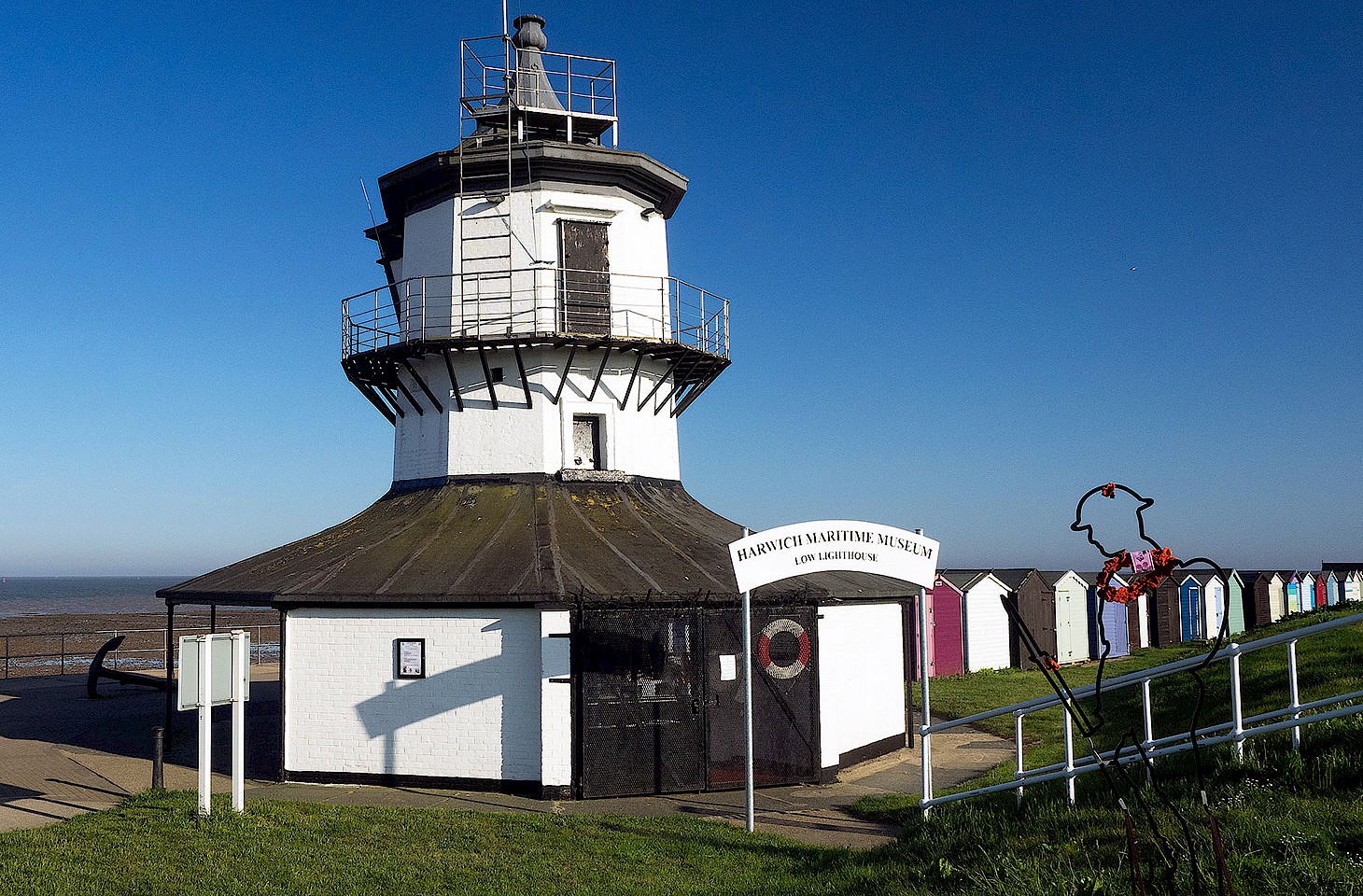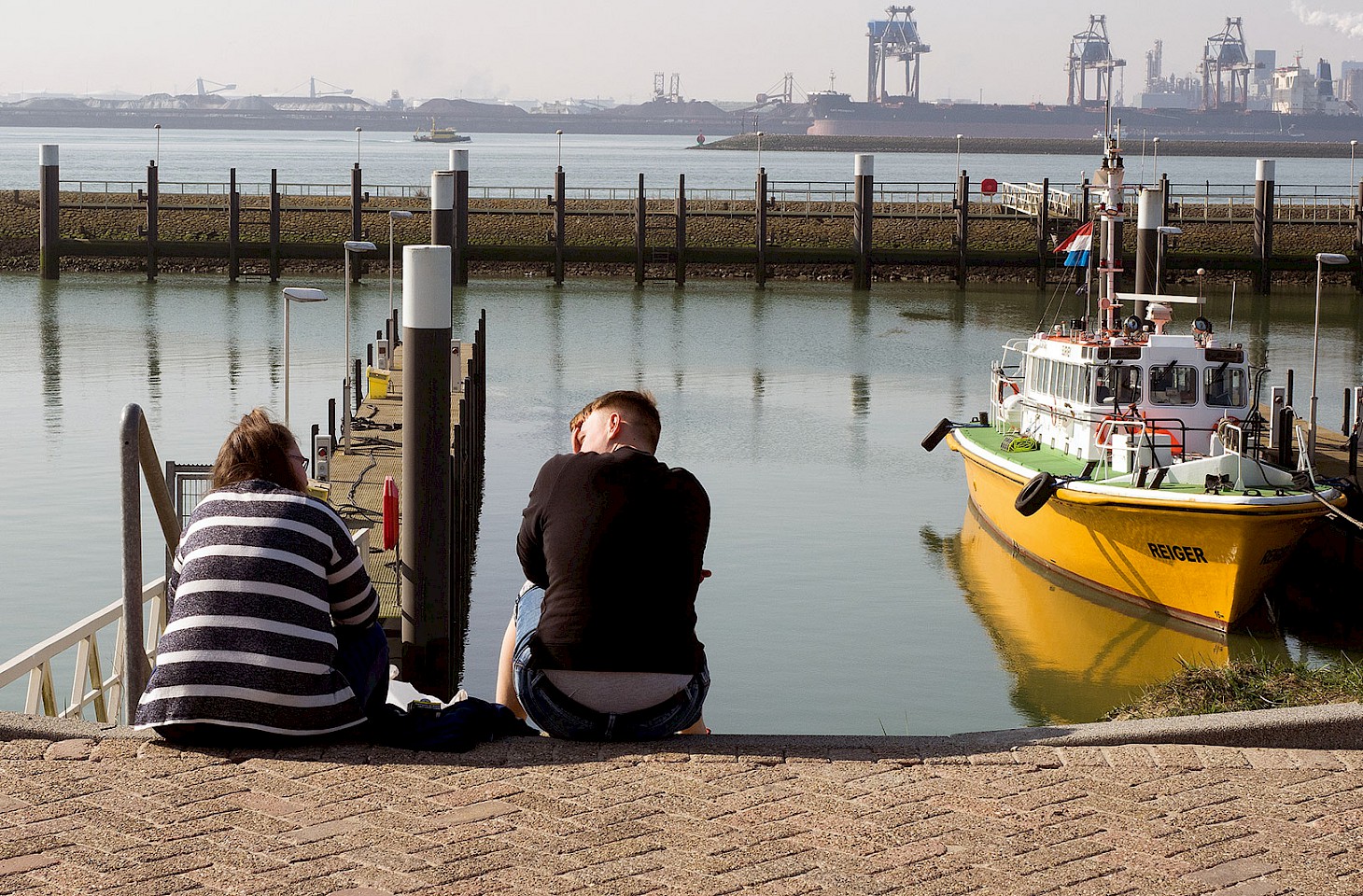Eric steers the small aluminium motorboat down the narrow canal. From the two-seater vessel, there are good views over the water meadows, where the very last of the morning mist is now clearing. The canal makes a gentle arc to the left and, at a point where the waterway widens, Eric swings the boat around, so that we are pointing back east towards Alkmaar. Eric brings the boat to rest by a wooden dock. He kills the motor and jumps out, adjusts his cap and looks around at a glorious landscape which is typical of this rural part of Holland.
Eric opens the blue front door of the windmill and reaches for a set of keys, one of which he uses to open a large trap door, revealing a scoop wheel. His next move is to release the brake rope, tied to a small post on one of the mill’s weatherboarded sides. He then unlocks the tool shed from which he grabs a rake and a broom. With the rake he carefully removes the weeds which clog the feed side of the mill; he then uses the broom to clean the walls. He concludes this outdoor routine by greasing and oiling the scoop wheel shaft, then heads inside, where he is greeted with a purr. Bacio is making it clear that it’s time for breakfast.
Minutes later, Eric Zwijnenberg is sitting quietly, looking out of the living room window over the flat terrain which surrounds the mill. The sound of the ticking clock is interrupted only by the clinking of spoon and cup. Eric smiles as he alternates gentle sips of his tea with bites of his favourite raisin cake, occasionally turning around to check up on his cat, also eating peacefully in the kitchen. Both are visibly content in their well established morning routines, at ease in each other’s company. Eric sits at a table in a crammed living room, but the space feels surprisingly uncluttered, with the mishmash of objects melding into a collection that has its own systematic unity.
There are family pictures, a painting of the windmill, miniature vintage cars, certificates, photos of Bacio’s predecessors, check curtains, flowers, a Bakelite radio, a stunning antique sideboard boasting elaborate marquetry, old spoons and ceramic plates. Each item gives a hint of Eric’s tastes; more importantly, this eclectic ensemble paints a precise picture of the man’s life.
“Most of what you see here belonged to my parents,” ventures Eric, breaking the silence to appease my curiosity. This is a space dripping with nostalgia. “Much of what you see here has hardly changed since we came here in 1953.” He points to a yellowing advertisement in a small frame. It reads: “Oude molen ideaal in polderland vlak bij duin en zee gelegen, zeer geschikt voor zomerbewoning.” Eric’s parents were looking for a small holiday retreat and the tiny advert answered their needs. The old drainage mill of Wimmenum, decommissioned and abandoned two years earlier, and in a fine setting not far from the dunes and the sea, was available to rent.



